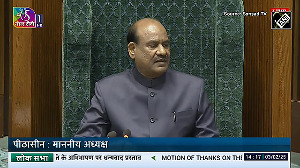Al Janoub, a 40,000-seat venue made to resemble the sail of a dhow, or traditional wooden sailboat, was opened last May and is the first to showcase the new cooling system.

On a late September evening in Qatar a persistent 35 degree Celsius heat hung outside the 2022 World Cup host's newly-built Al Janoub stadium, but down on the pitch the temperature was a cool 21 degrees.
Qatar, a tiny Gulf state known for its scorching desert climate, says it has designed an energy-efficient cooling system that can make its open-air stadiums usable even in summer temperatures that soar well into the 40s.
Soccer's next global showpiece tournament was moved to November and December to avoid Doha's intense summer heat, but Qatar decided to stick with the chilled stadiums in order to have future venues that would be usable year-round.
Al Janoub, a 40,000-seat venue made to resemble the sail of a dhow, or traditional wooden sailboat, was opened last May and is the first to showcase the new cooling system.
"You're living inside a micro, climate-controlled bubble," said Saud Abdul-Ghani, a Qatar University mechanical engineering professor who led the design, as he waved a bright orange thermometer to demonstrate the roughly 14-degree drop.
The stadium was the first of seven in Qatar to be completed ahead of the tournament. The other six are slated to be ready by the end of 2020 and an eighth, Khalifa International Stadium, was renovated and opened in 2017.

Along the pitch dozens of soccer ball-sized nozzles blow out chilled air, while tiny angular ducts beneath the seats keep the stands at 24-26 degrees. Censors around the stadium keep track of different zones and adjust the flow from a control room.
When asked the price tag of the cooling system, Abdul-Ghani said: "a good amount of money", without providing a figure.
Doha has put the tournament at the centre of a national development plan aimed at diversifying its energy economy and projecting itself on to the world stage through sport.
Qatar World Cup organising committee officials have said the country is spending $6.5-7 billion on all stadiums and training facilities combined.
Thani Khalifa Al Zarraa, the project manager for Al Janoub Stadium, said the cooling system increased the cost of construction by two to three times, to around $6,000-7,000 per seat, suggesting a stadium cost of about $240-280 million.
Despite the chilled stadiums, Qatar has said its World Cup will have the smallest carbon footprint of any before it.

Nasser Al Khater, CEO for FIFA World Cup Qatar 2022, said Doha's compact tournament will eliminate the need for domestic flights and a new metro system will further cut emissions.
Abdul-Ghani said the system, which has been left unpatented for others to adopt, requires about a fifth of the energy typical to cool spaces of the same size, such as airport terminals or closed baseball fields, because it continuously recycles air into small zones.
"The Americans, Mexicans and Canadians will surely look at this because of thermal stress on players," Abdul-Ghani said, referring to the host nations of the 2026 World Cup.
The 2026 tournament will be expanded to 48 teams as opposed to 32 and matches will be played across the United States, Canada and Mexico.
Candidate cities include Miami, Atlanta, Orlando, Dallas, Houston and others which are notoriously hot and humid in the summer.
"With global warming, Paris was 40 plus, the UK 35 plus, so even the Europeans need to look at this carefully," Abdul-Ghani added, referring to this summer's heat-wave.














 © 2025
© 2025